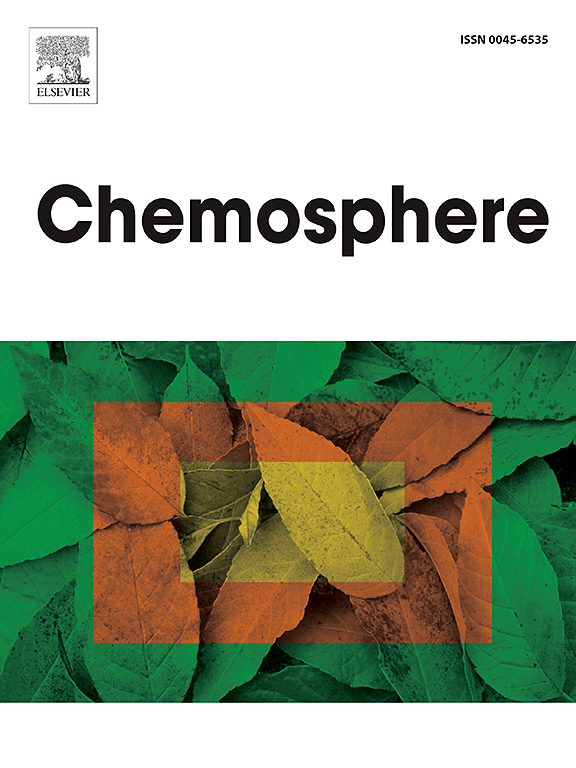曝气强度和污泥回收率对新型太阳能两级斜板-膜生物反应器系统处理实际建筑废水微生物结构变化和药物去除性能的影响
IF 8.1
2区 环境科学与生态学
Q1 ENVIRONMENTAL SCIENCES
引用次数: 0
摘要
太阳能两级倾斜板膜生物反应器(STIP-MBR)利用离网混合太阳能系统的能量,用于处理高层建筑废水中的药物,具有节能效果。本研究的目的是研究好氧和微氧条件下的曝气强度以及污泥回收率(100%和200%)对微生物结构变化和目标药物(环丙沙星(CIP)、咖啡因(CAF)和磺胺甲恶唑(SMX))去除性能的影响。结果表明,增加曝气强度可提高所有目标药物的去除性能。生物降解和吸附是脱除药物的主要机制。此外,提高污泥转换率可以增强系统对CIP和CAF的吸附以及SMX的生物降解。较高的曝气倾向于减少生物饼和污泥污染物,但与微氧条件相比,它增加了膜孔堵塞。系统地揭示了STIP-MBR系统中与有机物、营养物和靶向药物去除相关的微生物群落。总体而言,STIP-MBR系统在处理实际建筑废水时可以完全减少388.5千瓦时(相当于7千瓦时/立方米)的能耗。本文章由计算机程序翻译,如有差异,请以英文原文为准。

Effects of aeration intensity and sludge return rate on microbial structure change and pharmaceutical removal performance of the novel solar-powered two-stage inclined-plate-membrane bioreactor system for the treatment of real building wastewater
The solar-powered two-stage inclined plate-membrane bioreactor (STIP-MBR), utilized energy from an off-grid hybrid solar system, was developed for treatment of pharmaceuticals from the high-rise building wastewater with energy-savings. The aim of this work was to investigate the effects of aeration intensity in terms of aerobic and microaerobic conditions, and sludge return rates (100 % and 200 %) on the microbial structure changes and the removal performances of the targeted pharmaceuticals (Ciprofloxacin (CIP), Caffeine (CAF) and Sulfamethoxazole (SMX)). It was found that the removal performances of all target pharmaceuticals could be enhanced by increasing the aeration intensity. Both biodegradation and adsorption were the main mechanisms for pharmaceutical removal. In addition, increasing the sludge turn rate could enhance the adsorption of CIP and CAF and the biodegradation of SMX in the system. Higher aeration tended to reduce bio-cake and sludge foulants, but it increased pore blockage of the membrane compared to the microaerobic conditions. The microbial community associated with the removal of organics, nutrients and targeted pharmaceuticals inside the STIP-MBR system was systematically revealed. Overall, the STIP-MBR systems could achieve a complete reduction in energy consumption of 388.5 kWh (equivalent to 7 kWh/m3) in treating the real building wastewater.
求助全文
通过发布文献求助,成功后即可免费获取论文全文。
去求助
来源期刊

Chemosphere
环境科学-环境科学
CiteScore
15.80
自引率
8.00%
发文量
4975
审稿时长
3.4 months
期刊介绍:
Chemosphere, being an international multidisciplinary journal, is dedicated to publishing original communications and review articles on chemicals in the environment. The scope covers a wide range of topics, including the identification, quantification, behavior, fate, toxicology, treatment, and remediation of chemicals in the bio-, hydro-, litho-, and atmosphere, ensuring the broad dissemination of research in this field.
 求助内容:
求助内容: 应助结果提醒方式:
应助结果提醒方式:


